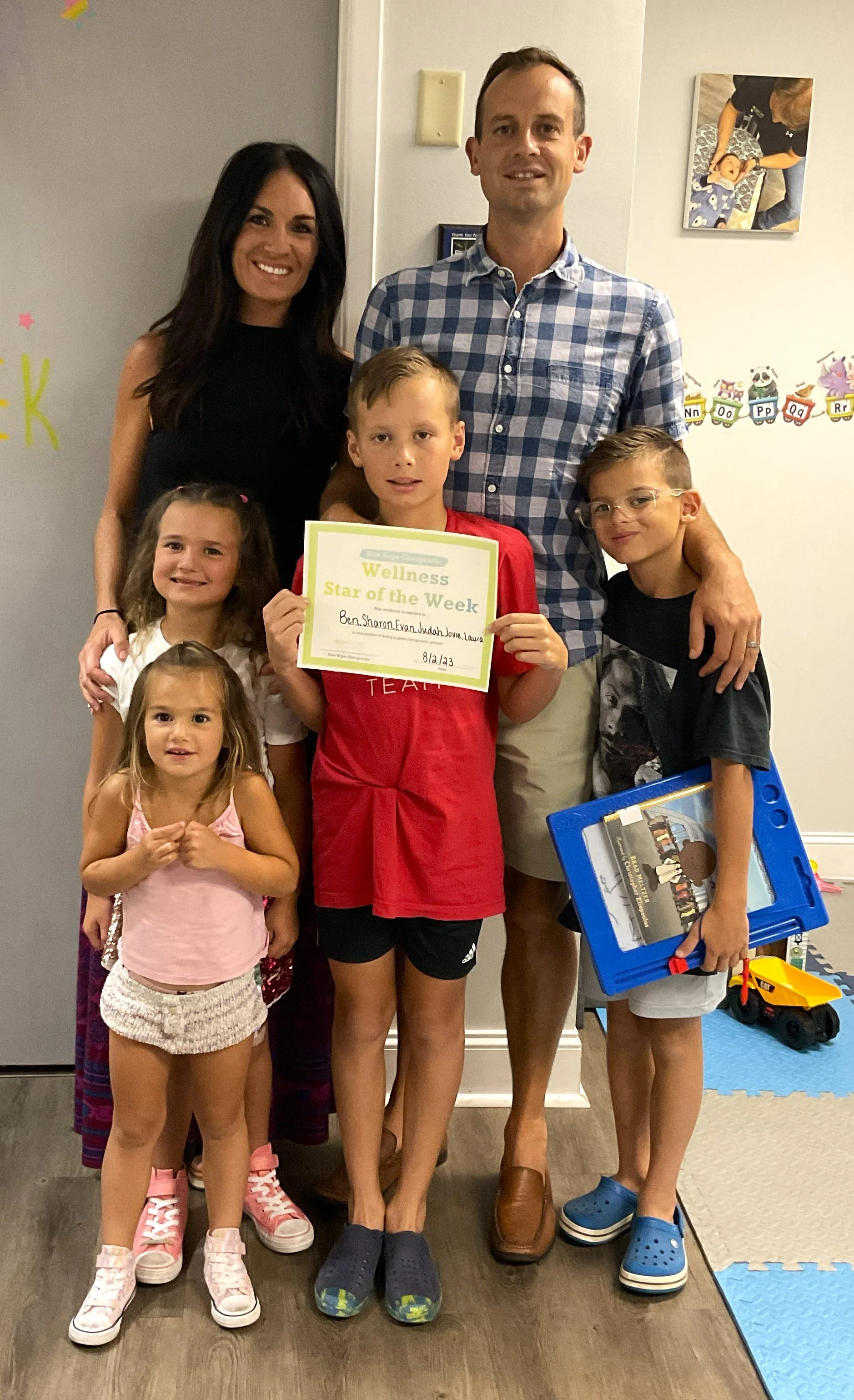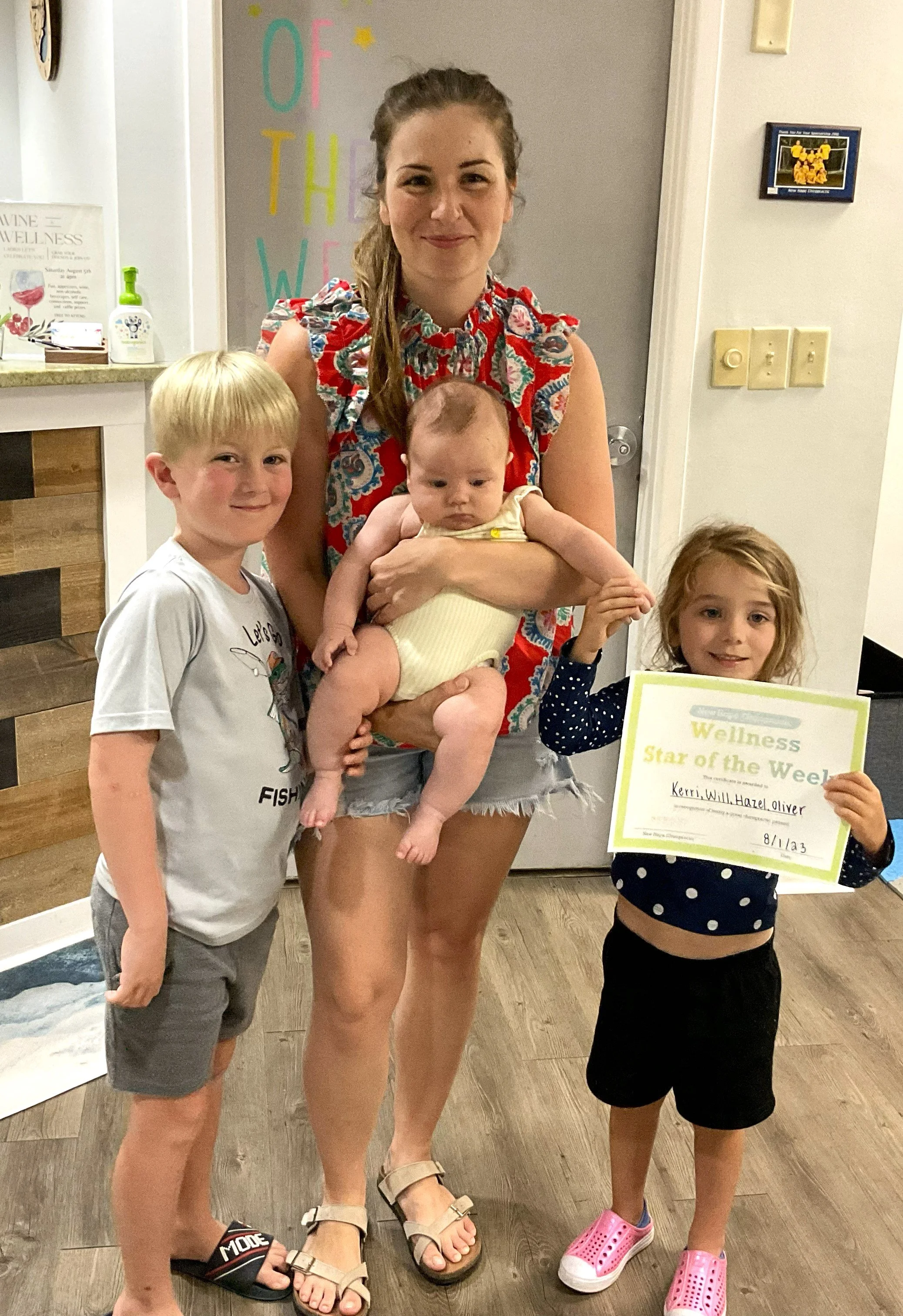Why Your Whole Family Needs Nervous System Support (Not Just Your Kids) 💛
Picture this: It’s Thanksgiving dinner.
Your kids are melting down. Grandma’s anxiety is through the roof. Dad’s jaw is clenched from work stress. You’re doing everything you can to hold it together — while your eye won’t stop twitching.
Sound familiar?
Here’s what most families don’t realize — this isn’t just holiday chaos. It’s your family’s nervous systems playing tug-of-war with each other.
The Hidden Truth About Stress
Stress is contagious. And not just emotionally — but neurologically.
When one family member’s nervous system gets stuck in fight-or-flight mode, it sends ripple effects through the whole household. Your baby picks up on Dad’s work tension. Your toddler mirrors your overwhelm. Even your dog reacts when everyone’s stress levels spike.
We try to fix things separately — medication for Mom’s anxiety, sleep training for baby, behavior charts for the 5-year-old — but it rarely sticks. Why?
Because you can’t heal in isolation when your nervous systems are wired to co-regulate with the people you love most.
How Stress Patterns Pass Down Generations
Research shows that around 15% of infants struggle with regulation challenges in their first year. But here’s what most people miss: those babies are often born into families where the parents’ nervous systems are already overwhelmed.
During pregnancy, Mom’s stress hormones directly influence baby’s developing nervous system. High cortisol levels can literally program a baby’s brain and body for stress — long before they take their first breath.
That baby grows into a child who’s quick to worry or melt down, then becomes an adult carrying those same patterns. The cycle continues — until someone decides to break it.
So when three or four generations come together at the holidays, you’re not just sharing food and laughter — you’re also sharing decades of nervous system patterns that have been passed down like family recipes.
Co-Regulation: Your Family’s Invisible Connection
Your nervous system doesn’t operate on its own. It’s constantly “listening” to and syncing with the nervous systems around you — a process called co-regulation.
Think of it like air traffic control: your nervous system is trying to coordinate with everyone else’s in your home, moment by moment.
Kids are especially sensitive to this. They can sense your tone, body language, and even your heart rhythm. When one parent walks in the door tense from work, the whole family’s nervous systems start to shift toward stress within minutes.
That’s why sometimes you can feel the energy in a room change instantly — because it literally does.
Why Focusing on Just One Family Member Doesn’t Work
Trying to help one person in the family while everyone else stays stressed is like remodeling a house on a cracked foundation. You can make progress, but it won’t hold.
Sending your child to therapy or trying to change their behavior without addressing the family’s shared stress environment is like pushing a car with the parking brake on — slow, frustrating, and exhausting.
The truth is, your family is an ecosystem. When one person’s nervous system finds balance, it helps everyone else begin to regulate too. When one person stays stuck, the stress keeps echoing.
It’s not just a “Perfect Storm” for your child — it’s often a family-wide pattern that needs collective healing.
The “Holiday Amplifier Effect” 🎄
Ever wonder why family gatherings can feel so draining? It’s not just the cooking, cleaning, or noise.
The holidays bring together multiple generations of stressed systems — Grandma’s worry patterns, Dad’s work stress, Mom’s multitasking overload, the kids’ emotional rollercoasters — all syncing and amplifying one another.
That’s why you might notice:
💥 Kids acting out more than usual
😴 Feeling totally exhausted afterward
🤒 Everyone catching colds after big gatherings
It’s not the turkey making you tired — it’s your nervous system trying to manage everyone else’s stress energy in the room. Just like an overloaded circuit breaker, eventually it trips, leaving you wiped out.
Healing Happens Together
Here’s the hopeful truth: you can change this pattern.
When families receive neurologically-focused chiropractic care together, their nervous systems begin to regulate in harmony — creating what we call a regulation ripple. Each adjustment helps the body move out of fight-or-flight and into a calm, connected state.
We see it all the time at New Hope Chiropractic — families who start care together begin to sleep better, communicate more peacefully, and experience less tension overall. The energy in their home shifts from chaos to calm.
It’s not magic — it’s neurology.
Your family’s nervous systems are connected just like an invisible web. When one person’s system finds balance, everyone benefits. When everyone receives support, healing multiplies.
What You Can Do Right Now
1️⃣ Notice the patterns. Watch how your stress affects your child’s behavior. See how one person’s bad day changes the mood of the whole home.
2️⃣ Start with awareness. Talk as a family about stress and connection — kids understand more than we think.
3️⃣ Support the system, not just the symptoms. Chiropractic adjustments help calm the nervous system, improve regulation, and restore balance for every age and stage.
When you prioritize whole-family care, you’re not just helping your child’s sleep, digestion, or focus — you’re breaking generational stress cycles and building a new foundation of calm, connection, and resilience for everyone under your roof.
Your Family Deserves to Thrive 🌿
You don’t have to live in survival mode.
At New Hope Chiropractic, we help families like yours understand and reset their nervous systems — so you can all experience more peace, joy, and connection every day.
Reach out today to schedule your family’s consultation.
Your family’s health journey doesn’t have to be separate.
When you heal together, you grow together. 💛



